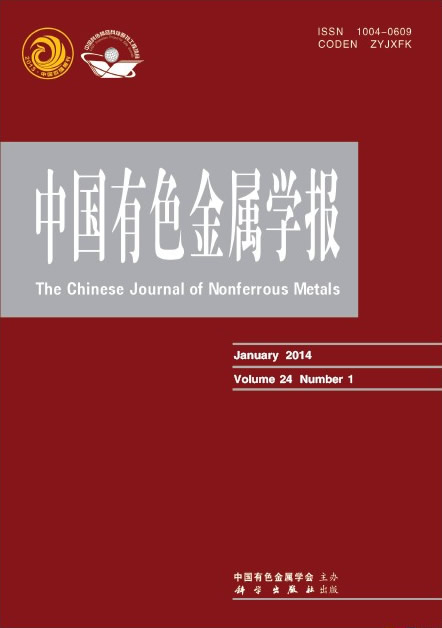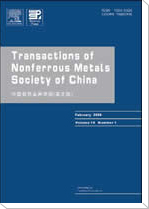(1. 江苏科技大学 金属液态成形实验室,苏州 215600;2. 江苏科技大学 材料科学和工程学院,镇江 212003;
3. 大连理工大学 材料科学与工程学院,大连 116024;4. 北京有色金属研究总院,北京 100088)
摘 要: 利用旋转电磁场搅拌制备AZ91D镁合金半固态浆料,在570~600 ℃间不同温度下浇注金属型试样,观察和分析不同固相率铸件的微观组织。结果表明:较低固相率(fs≤25%)铸件由α-Mg等轴晶和β-Mg17Al12相组成基体组织,初生固相颗粒以松散的聚团形式分散其中;而在相对较高固相率(36%≤fs≤45%)铸件中,浇注温度降低,初生相颗粒数目的剧增和浆料黏度的增大使得初生相颗粒在电磁搅拌形成的黏性剪切作用下相互间发生摩擦和挤压塑性变形,从而在高温条件下焊合形成紧密的团簇结构,且聚团中初生相颗粒间的晶界表现为低能量的直线型晶界。
关键字: 镁合金;半固态;初生相颗粒;电磁搅拌;团簇行为
(1. Laboratory of Liquid Metal Forming, Jiangsu University of Science and Technology, Suzhou 215600, China;
2. School of Materials Science and Engineering, Jiangsu University of Science and Technology, Zhenjiang 212003, China;
3. School of Materials Science and Engineering, Dalian University of Technology, Dalian 116024, China;
4. Beijing General Research Institute for Non-ferrous Metals, Beijing 100088, China)
Abstract:AZ91D magnesium alloy semisolid slurry was prepared using rotating electromagnetic stirring, and the molded samples were obtained at different pouring temperatures from 570 ℃ to 600 ℃, then the microstructures were characterized in detail and linked to the corresponding solid volume fraction. The results indicate that the incompact structure agglomerating a few primary solid particles, which disperses in the matrix consisting of α-Mg equiaxed dendrite and network distributed Mg17Al12 precipitates, is observed within structures of low solid fraction (fs) no more than 25%. Meanwhile, for the samples with a higher solid fraction, i.e. 36%≤fs≤45%, due to the reduction in the casting pouring temperature, increasing both the number of primary solid phase and the viscosity of slurry, brings the interaction among the primary particles within vigorously stirring melt, and thus causing slide, friction and plastic deformation between or among the neighboring solid particles. So the primary particles are welded together to form clusters at high temperature and exhibit low energy line-type crystal boundaries.
Key words: magnesium alloy; semisolid; primary solid particles; electromagnetic stirring; agglomerating behavior


